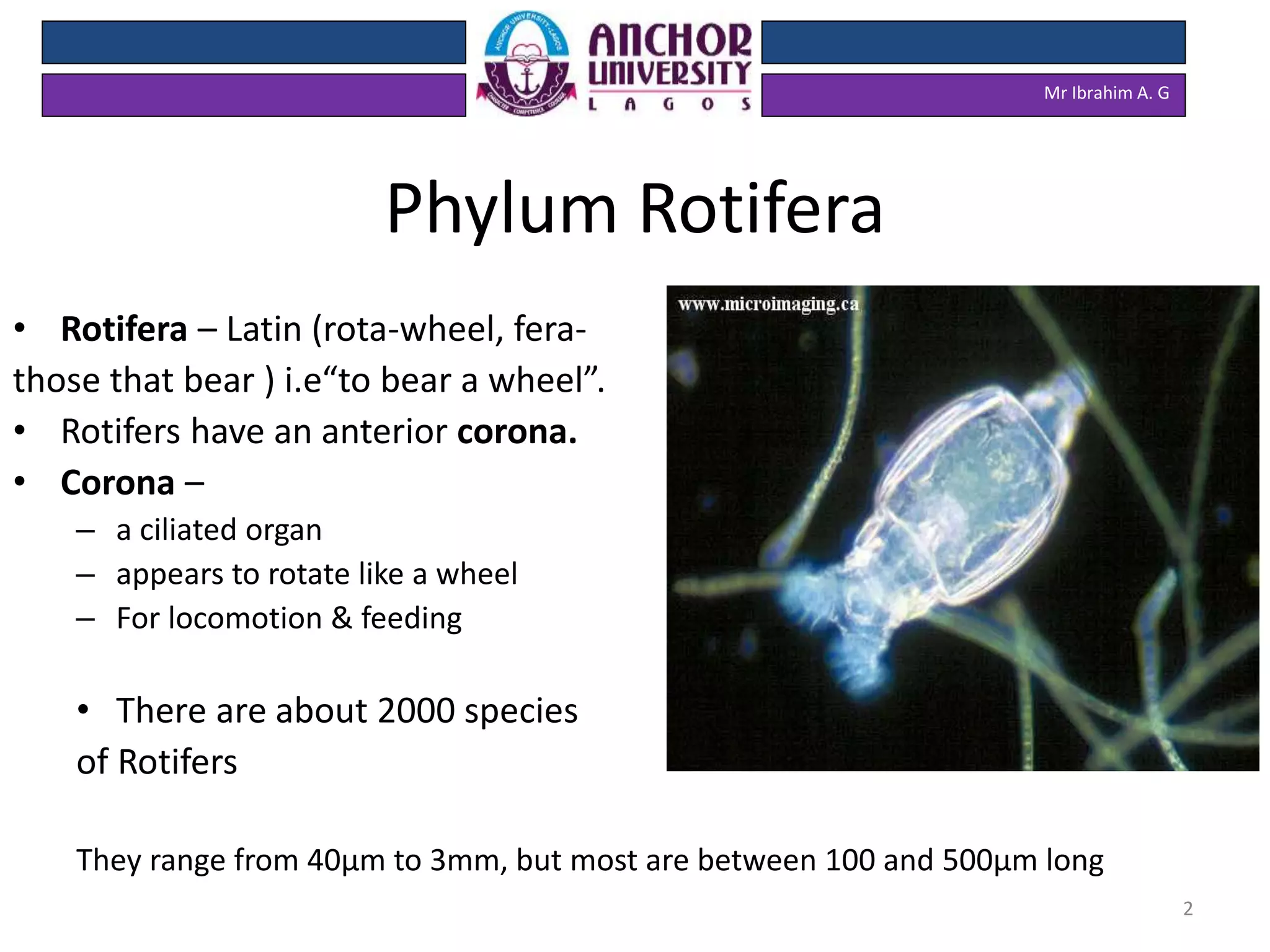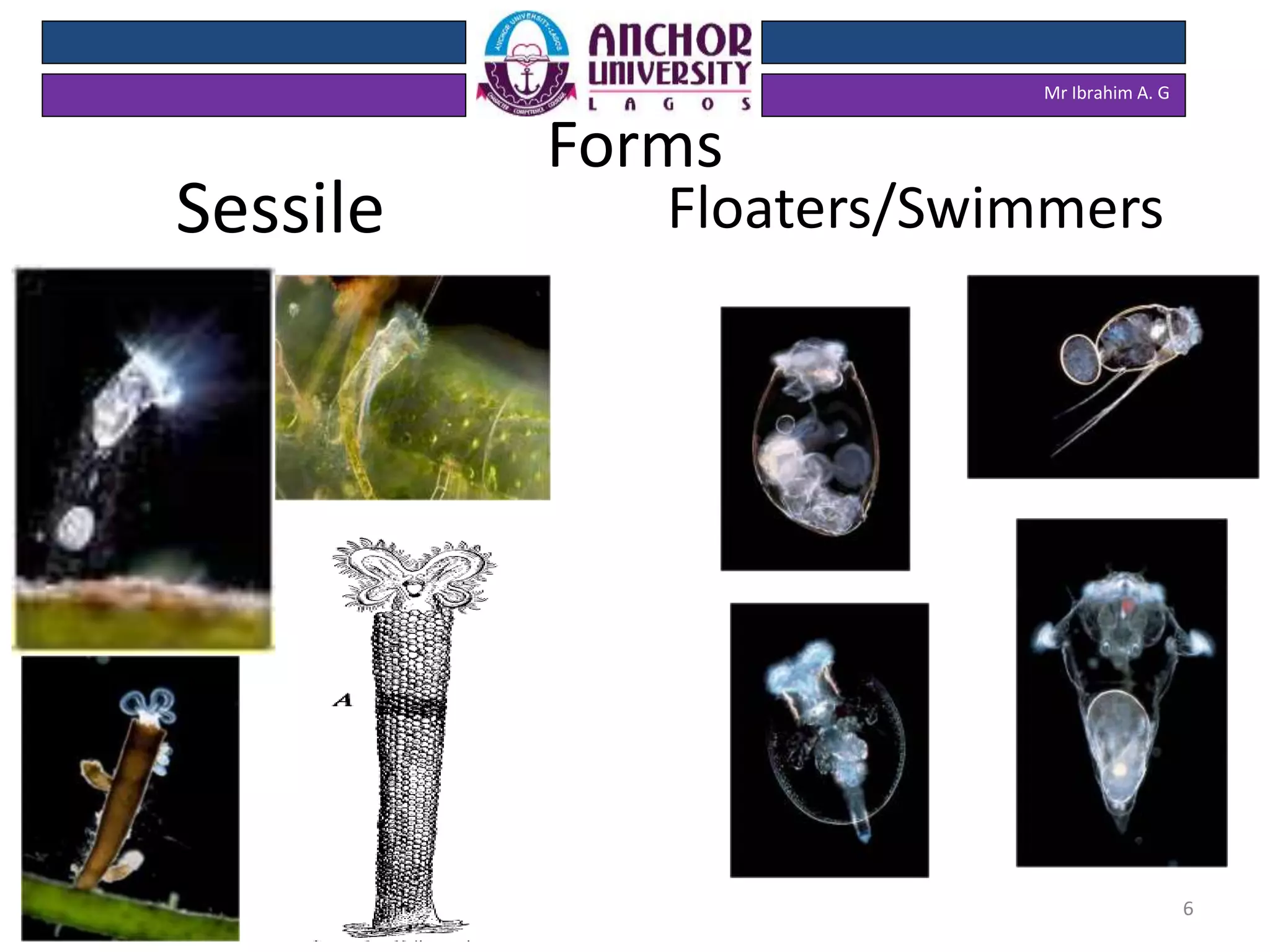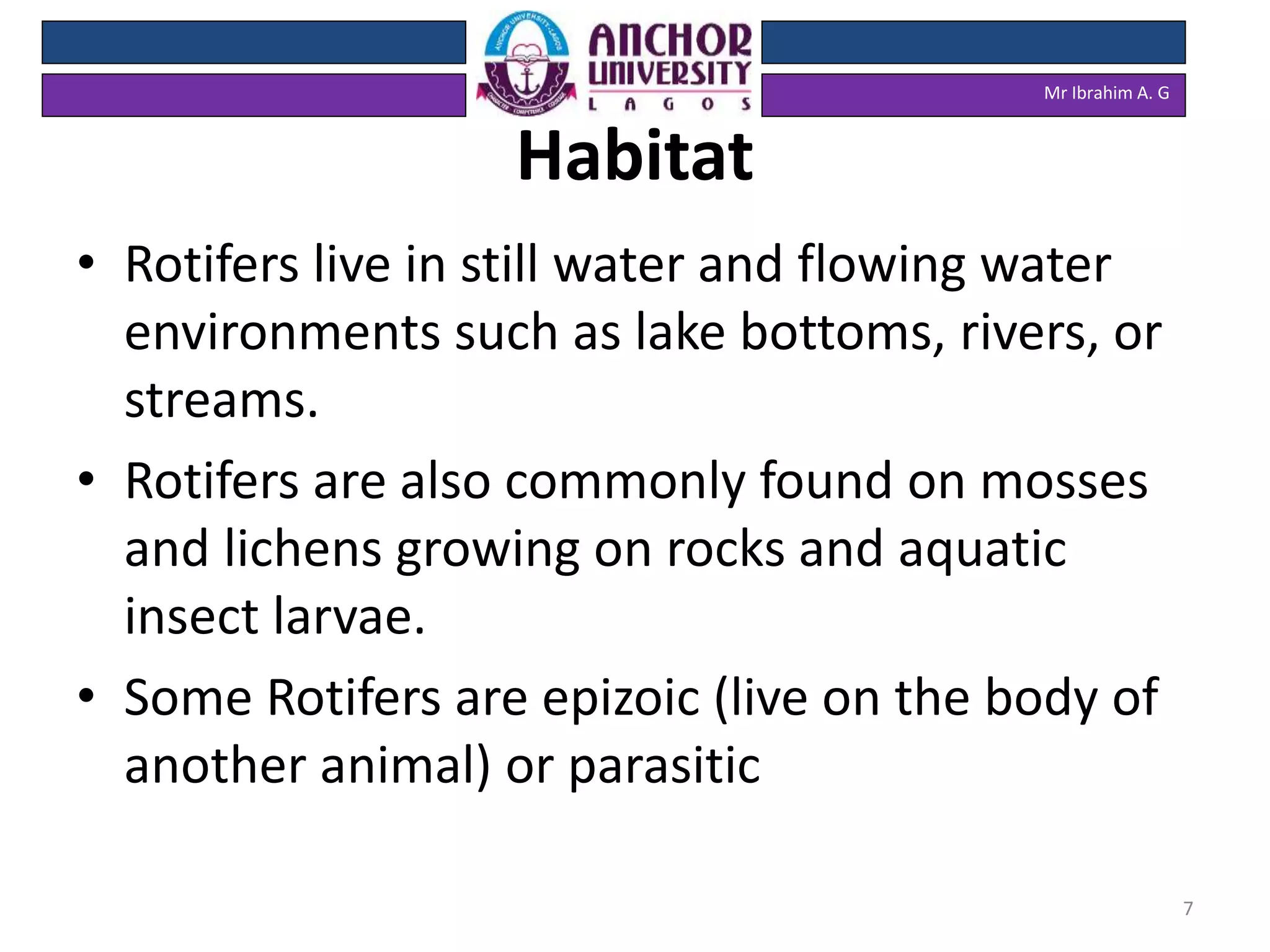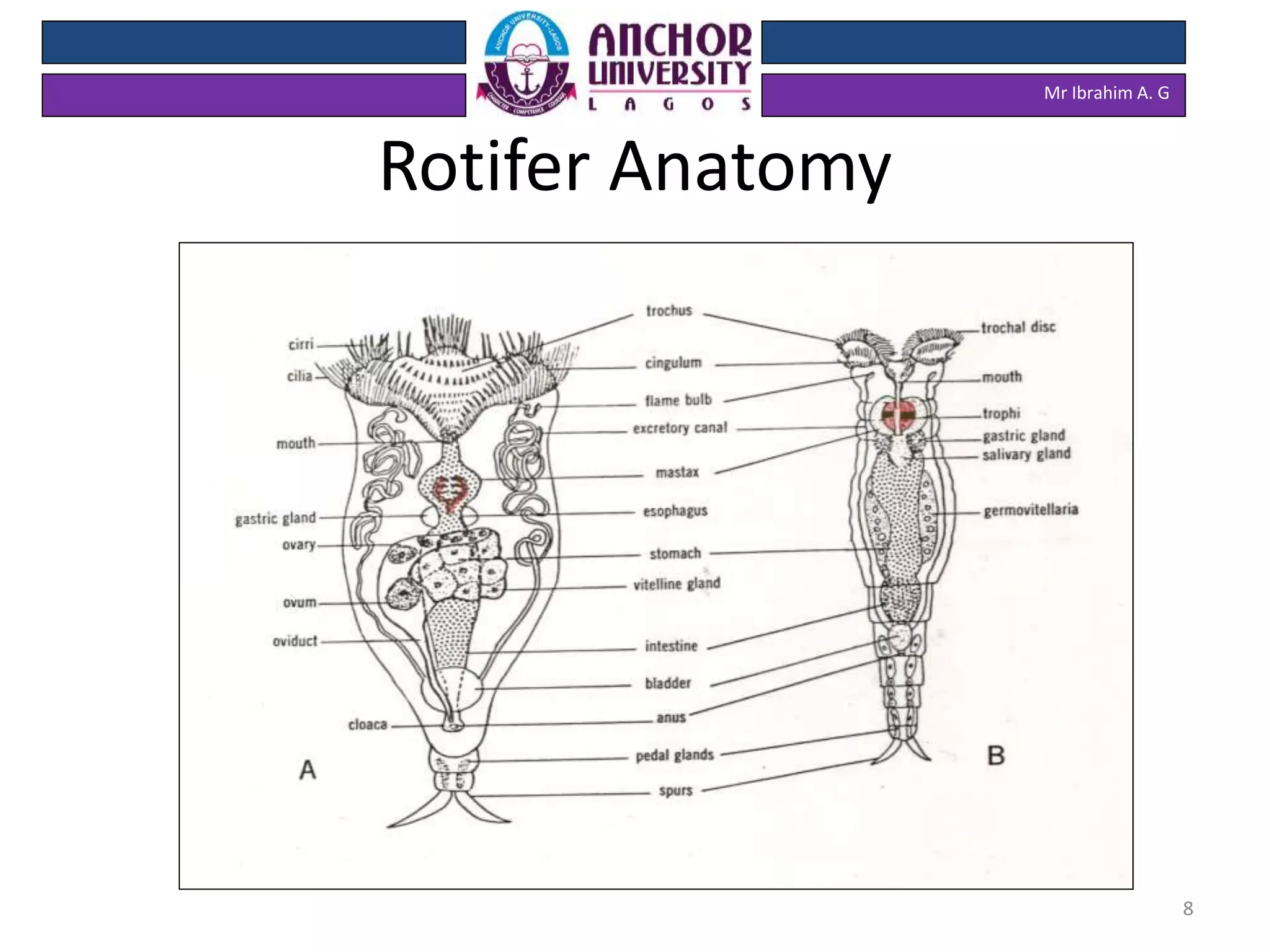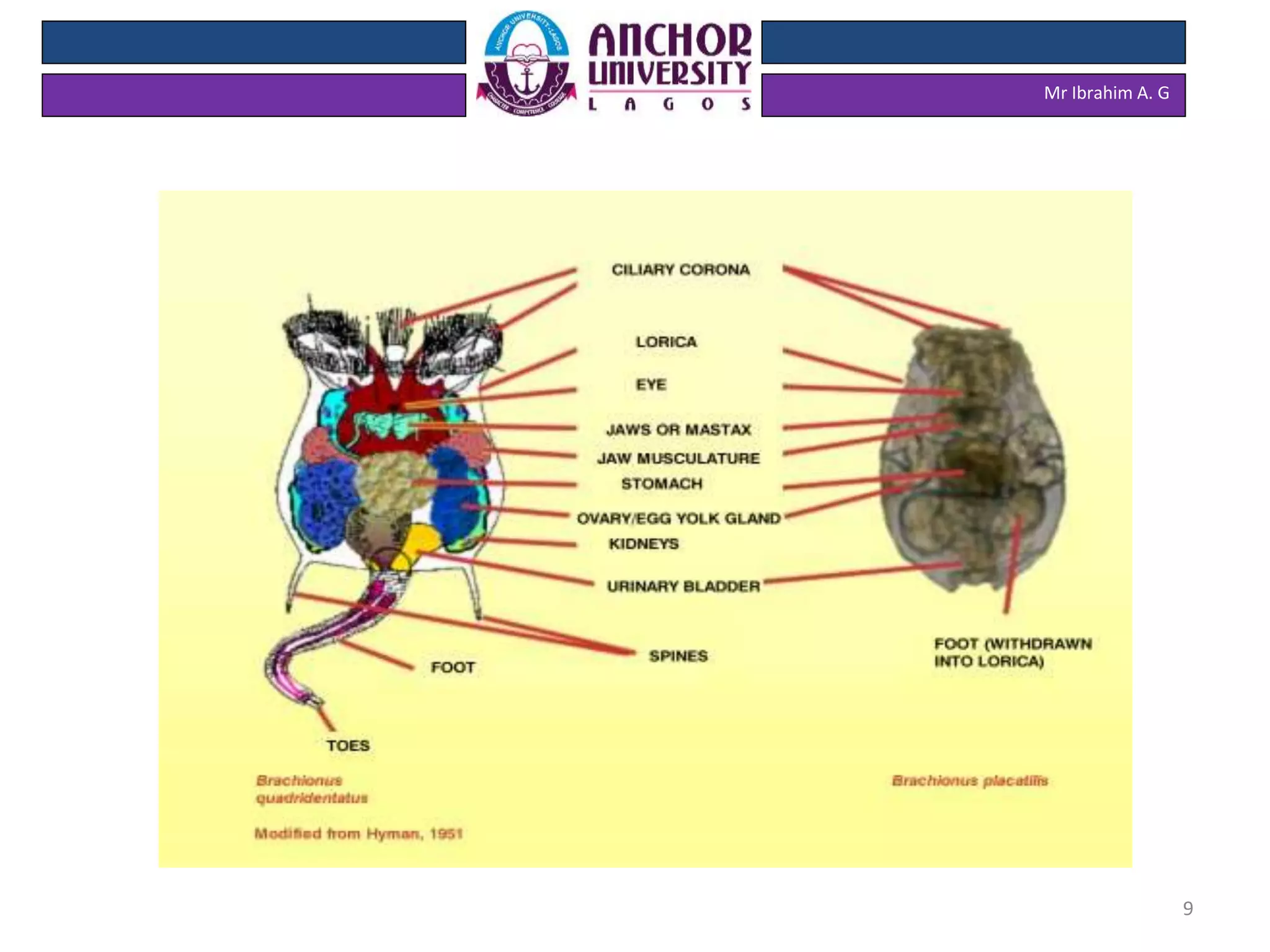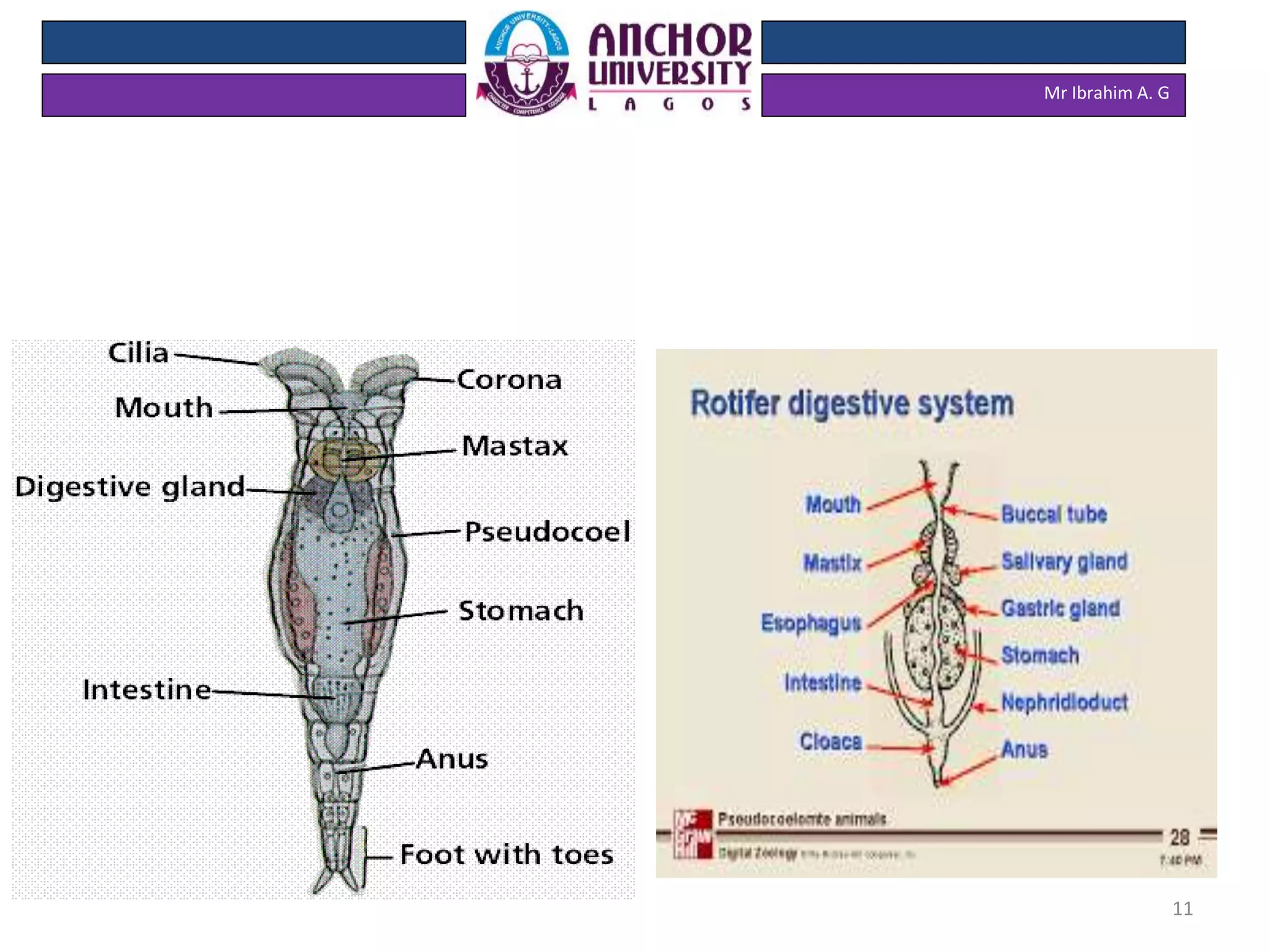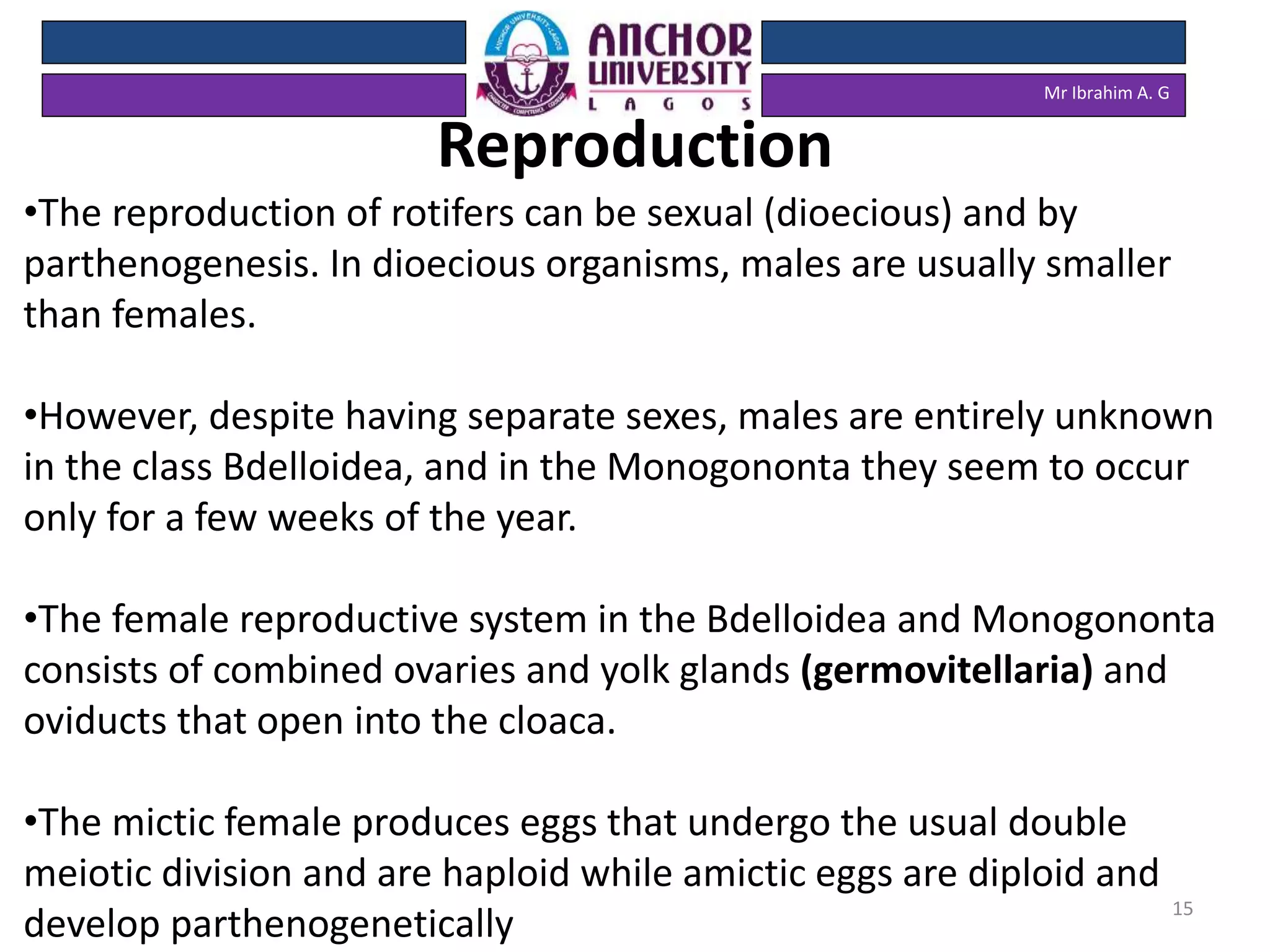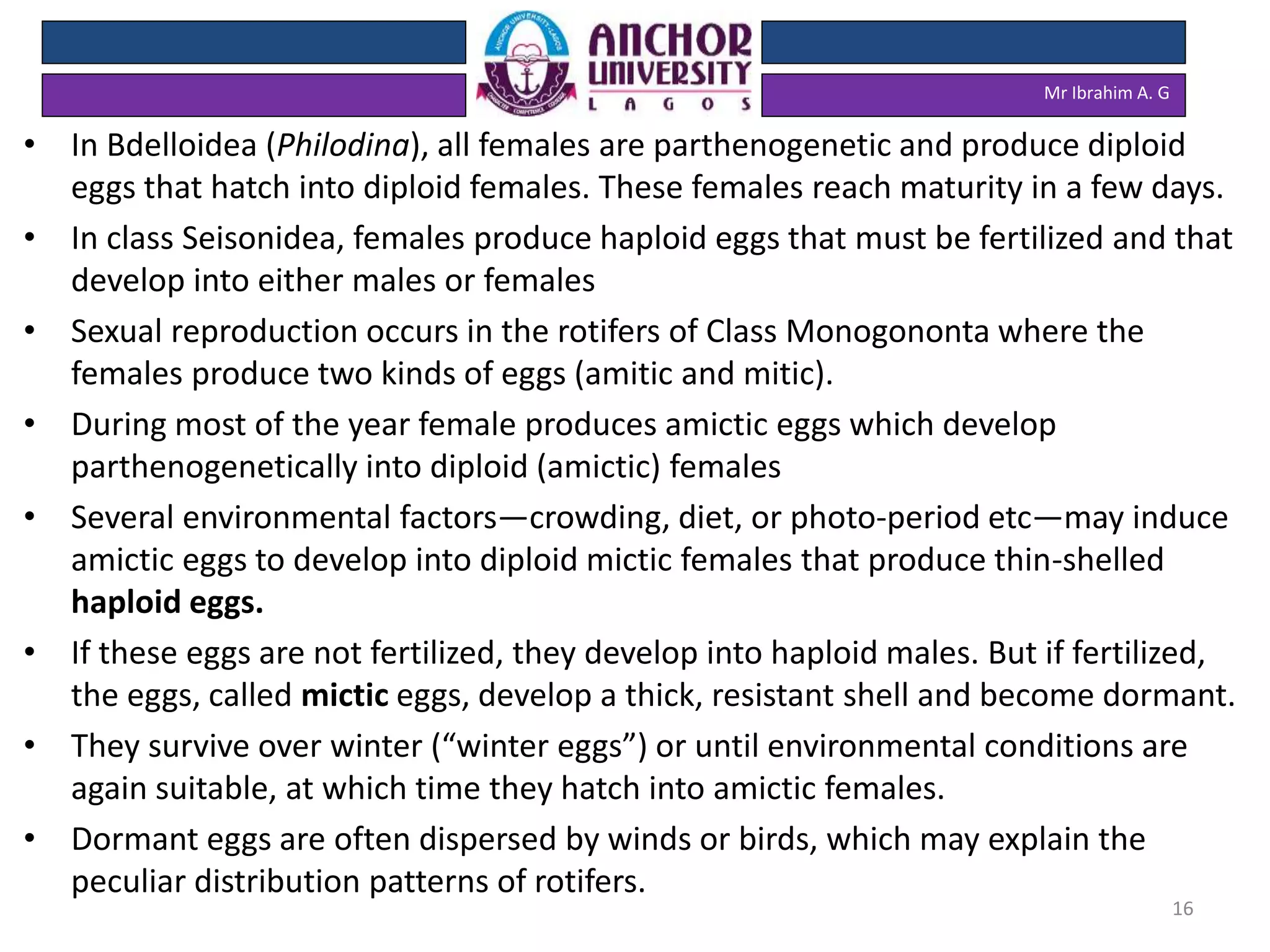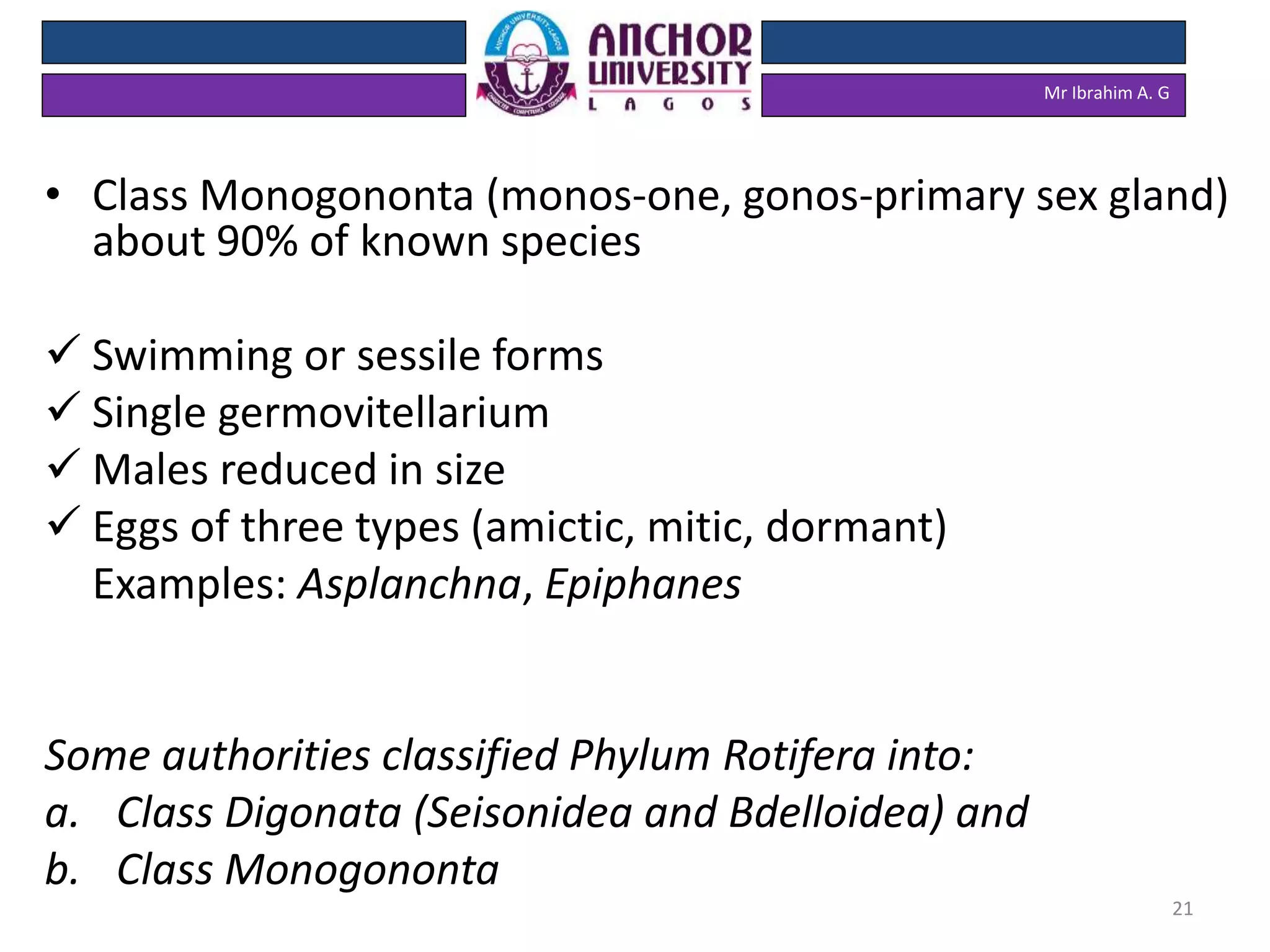This document discusses the phylum Rotifera, including their:
- General characteristics such as a ciliated corona used for locomotion and feeding and sizes ranging from 40μm to 3mm.
- Anatomy including a head with corona and mouth, trunk containing organs, and foot used for locomotion.
- Habitats of still waters, flowing waters, mosses, lichens, and occasionally on other animals.
- Reproduction which can be sexual or parthenogenetic, with some classes having males and some reproducing without males.

